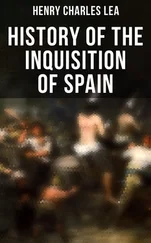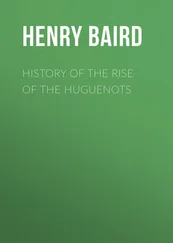The Santa Hermandad thus formed a mounted military police which covered the whole kingdom, under the Duke of Villahermosa, who appointed the captains and summoned the force to any point where trouble was threatened. Each centre of population elected two alcaldes, one a gentleman and the other a tax-payer or commoner, and levied a tax to defray the expense of the organization. The alcaldes selected the quadrilleros , or privates, and held courts which dispensed summary justice to delinquents, bound by no formalities and required to listen to no legal pleadings. Their decision was final, save an appeal to the throne; their jurisdiction extended over all crimes of violence and theft and they could inflict stripes, mutilation, or death by shooting with arrows. The quadrillero in pursuit of an offender was required to follow him for five leagues, raising the hue and cry as he went, and joined by those of the country through which he passed, who kept up the hunt until the fugitive was either caught or driven beyond the frontier. [91]
LA SANTA HERMANDAD
Great as were the services of the Hermandad in repressing the turbulence of the nobles and rendering the roads safe, its cost was a source of complaint to the communities which defrayed it. This was by no means small; in 1485 it was computed at 32,000,000 maravedís and subsequently it increased greatly; it was met by a tax of 18,000 maravedís on every hundred hearths and the money was not handled by the communities but was paid to the crown. [92]Nominally the organization was in their hands, but virtually it was controlled by the sovereigns, and when, in 1498, Ferdinand and Isabella, with an appearance of generosity, relieved the taxpayers and assumed to meet the expenses from the royal revenues, although they left the election of the alcaldes and quadrilleros in the hands of the local populations, yet the result was inevitable in subjecting it still more closely to the crown. [93]The institution became permanent, and its modern development is seen in the guarda civil . None of the reforms of Ferdinand and Isabella was so efficient in restoring order and none did more to centralize power. It was not only a rudimentary standing army which could be concentrated speedily to suppress disorder, but it carried the royal jurisdiction into every corner of the land and made the royal authority supreme everywhere. It was practically an alliance between the crown and the people against the centrifugal forces of feudalism, without which even the policy of Ferdinand and the iron firmness of Ximenes might have failed to win in the final struggle. When municipal independence likewise perished in the defeat of the Comunidades, the only power left standing in Spain was that of the throne, which thus became absolute and all-pervading. The new absolutism was embodied in the self-effacing declaration of the Córtes of Valladolid, in 1523, to Charles V, that the laws and customs were subject to the king, who could make and revoke them at his pleasure, for he was the living law. [94]How immense was the revolution and how speedily accomplished is seen in the contrast between the time when the Count of Benavente jeered at a royal safe-conduct and the people of Galicia scarce dared to receive a royal commissioner, and some sixty years later when, in the unruly Basque provinces, the people of San Sebastian, in 1536, appealed to the Emperor Charles V to relieve them from local nuisances, and royal letters were gravely issued forbidding the butchers of that town from erecting new stalls or skinning cattle in the streets and restricting the latter operation to places duly assigned for the purpose. [95]Thus the crown had become absolute and its interposition could be invoked for the minutest details of local government. He reads history to little purpose who imagines that this was the work of the Inquisition.
Another measure of no little importance in establishing the royal supremacy was the virtual incorporation in the crown of the masterships of the three great military Orders of Santiago, of Calatrava and of Alcántara. Under Henry IV a Master of Santiago had been able to keep the whole kingdom in confusion, and the wealth and power of the others, although not so great, were sufficient to render their chiefs the equals of the highest nobles. From Innocent VIII, in 1489, Ferdinand procured a brief granting him for life the administration of all three; and in her will Isabella bequeathed to him an annual income of ten millions of maravedís from their revenues. [96]As Ferdinand’s death drew near, the Orders endeavored to be released from subjection, claiming that they could be governed only by their own members, but prudent care secured in time from Leo X the succession in the masterships to Charles V, who, after Leo’s death, made haste to obtain from Adrian VI a bull which annexed them in perpetuity to the crown. [97]
It was impossible that a king so far-seeing and politic as Ferdinand and a queen so pious as Isabella, when reducing to order the chaos which they found in Castile, should neglect the interest of the faith on which, according to medieval belief, all social order was based. There were in fact burning religious questions which, to sensitive piety, might seem even more urgent than protection to life and property. To comprehend the intricacy of the situation will require a somewhat extended retrospect into the relations between the several races occupying the Peninsula.
CHAPTER II.
THE JEWS AND THE MOORS.
Table of Contents
THE influences under which human character can be modified, for good or for evil, are abundantly illustrated in the conversion of the Spaniards from the most tolerant to the most intolerant nation in Europe. Apologists may seek to attribute the hatred felt for Jews and Moors and heretics, in the Spain of the fifteenth and succeeding centuries, to an inborn peculiarity of the race—a cosa de España which must be accepted as a fact and requires no explanation, [98]but such facts have their explanation, and it is the business of the expositor of history to trace them to their causes.
The vicissitudes endured by the Jewish race, from the period when Christianity became dominant, may well be a subject of pride to the Hebrew and of shame to the Christian. The annals of mankind afford no more brilliant instance of steadfastness under adversity, of unconquerable strength through centuries of hopeless oppression, of inexhaustible elasticity in recuperating from apparent destruction, and of conscientious adherence to a faith whose only portion in this life was contempt and suffering. Nor does the long record of human perversity present a more damning illustration of the facility with which the evil passions of man can justify themselves with the pretext of duty, than the manner in which the Church, assuming to represent Him who died to redeem mankind, deliberately planted the seeds of intolerance and persecution and assiduously cultivated the harvest for nearly fifteen hundred years. It was in vain that Jesus on the cross had said “Father, forgive them, for they know not what they do”; it was in vain that St. Peter was recorded as urging, in excuse for the Crucifixion, “And now, brethren, I wot that through ignorance ye did it, as did also your rulers”; the Church taught that, short of murder, no punishment, no suffering, no obloquy was too severe for the descendants of those who had refused to recognize the Messiah, and had treated him as a rebel against human and divine authority. Under the canon law the Jew was a being who had scarce the right to existence and could only enjoy it under conditions of virtual slavery. As recently as 1581, Gregory XIII declared that the guilt of the race in rejecting and crucifying Christ only grows deeper with successive generations, entailing on its members perpetual servitude, and this authoritative assertion was embodied in an appendix to the Corpus Juris. [99]When Paramo, about the same period, sought to justify the expulsion of the Jews from Spain in 1492, he had no difficulty in citing canons to prove that Ferdinand and Isabella could righteously have seized all their property and have sold their bodies into slavery. [100]Man is ready enough to oppress and despoil his fellows and, when taught by his religious guides that justice and humanity are a sin against God, spoliation and oppression become the easiest of duties. It is not too much to say that for the infinite wrongs committed on the Jews during the Middle Ages, and for the prejudices that are even yet rife in many quarters, the Church is mainly if not wholly responsible. It is true that occasionally she lifted her voice in mild remonstrance when some massacre occurred more atrocious than usual, but these massacres were the direct outcome of the hatred and contempt which she so zealously inculcated, and she never took steps by punishment to prevent their repetition. Alonso de Espina merely repeats the currently received orthodox ethics of the subject when he tells us that to oppress the Jew is true kindness and piety, for when he finds that his impiety brings suffering he will be led to the fear of God and that he who makes another do right is greater in the sight of God than he who does right himself. [101]
Читать дальше












